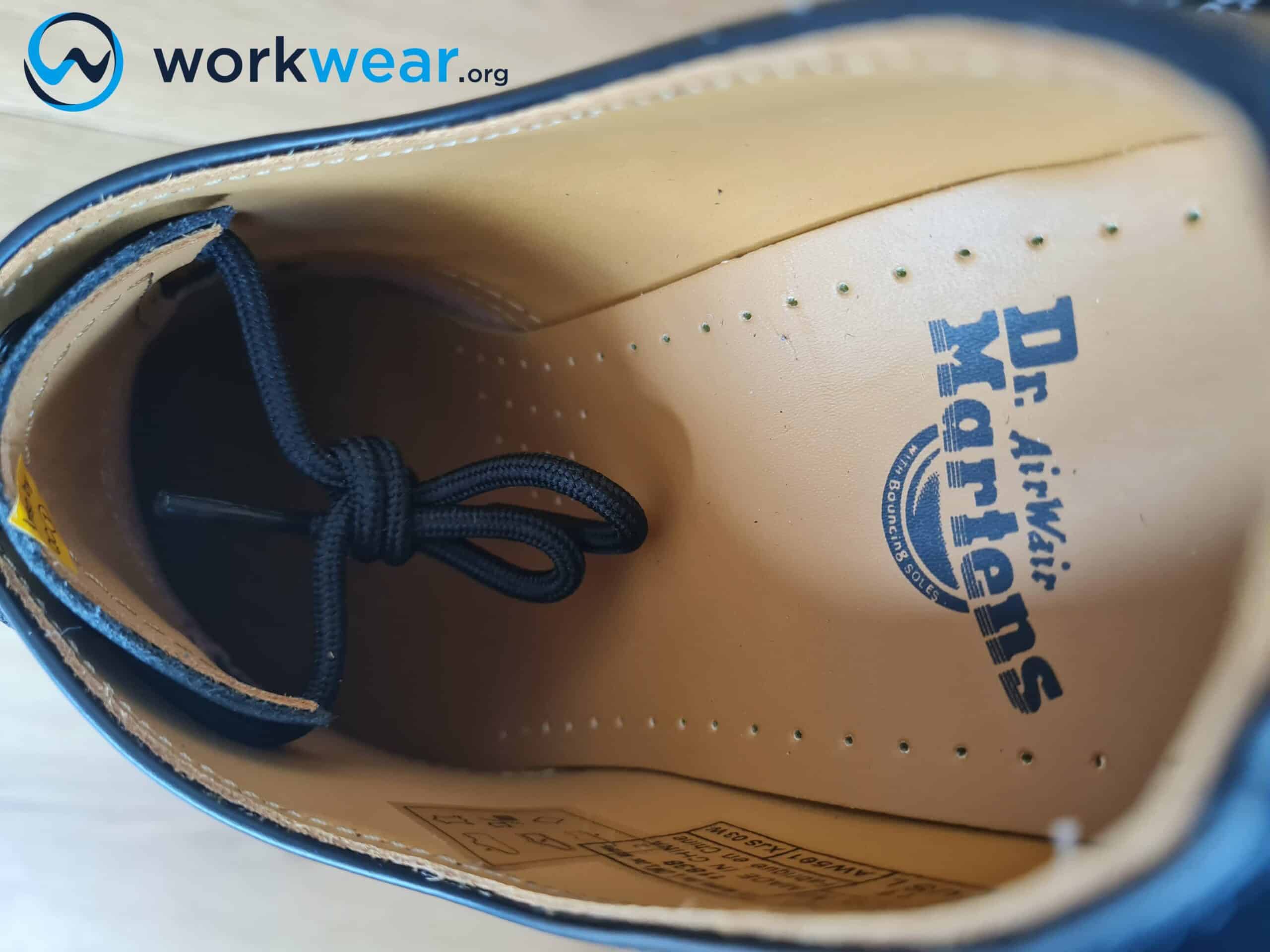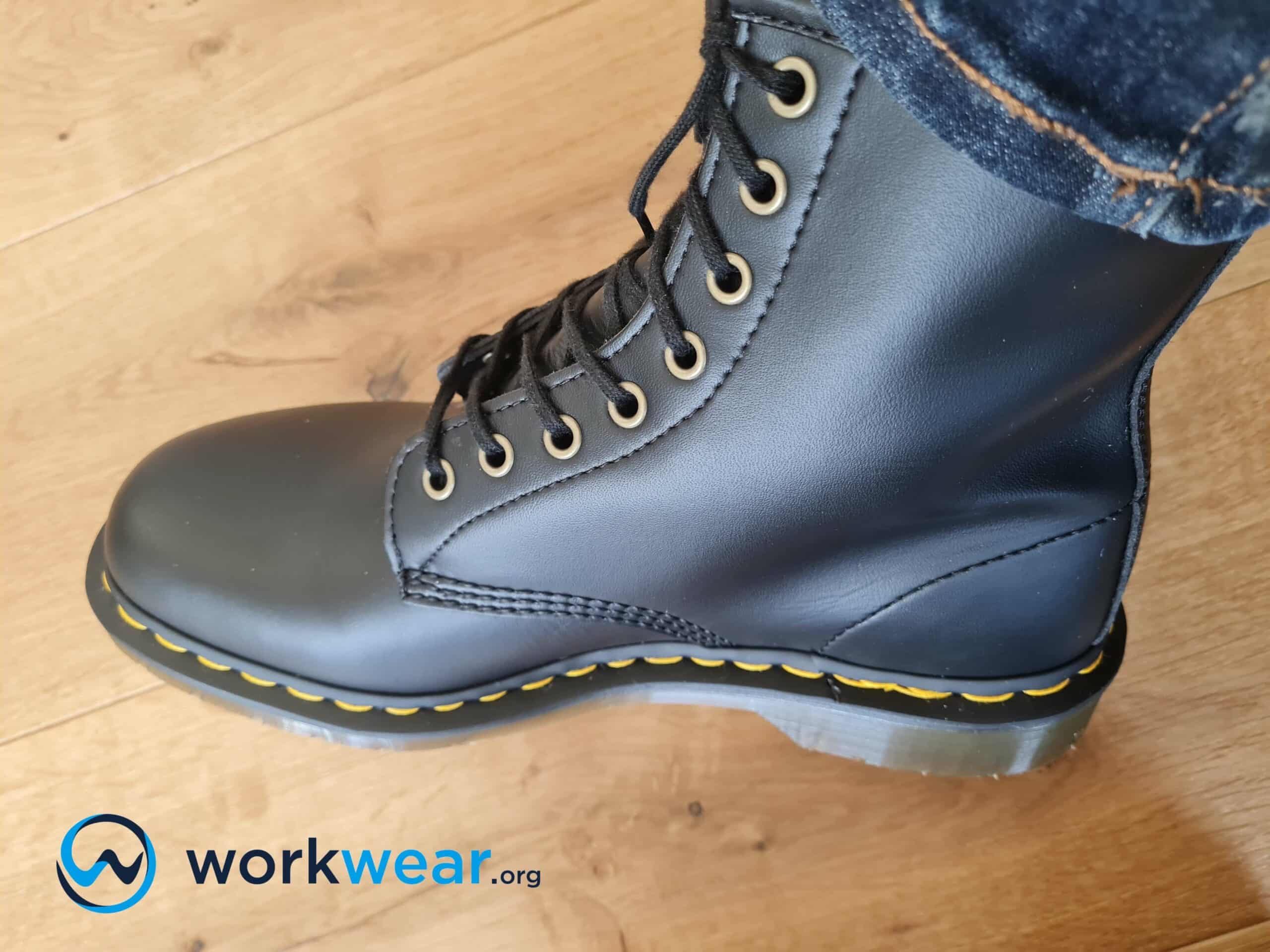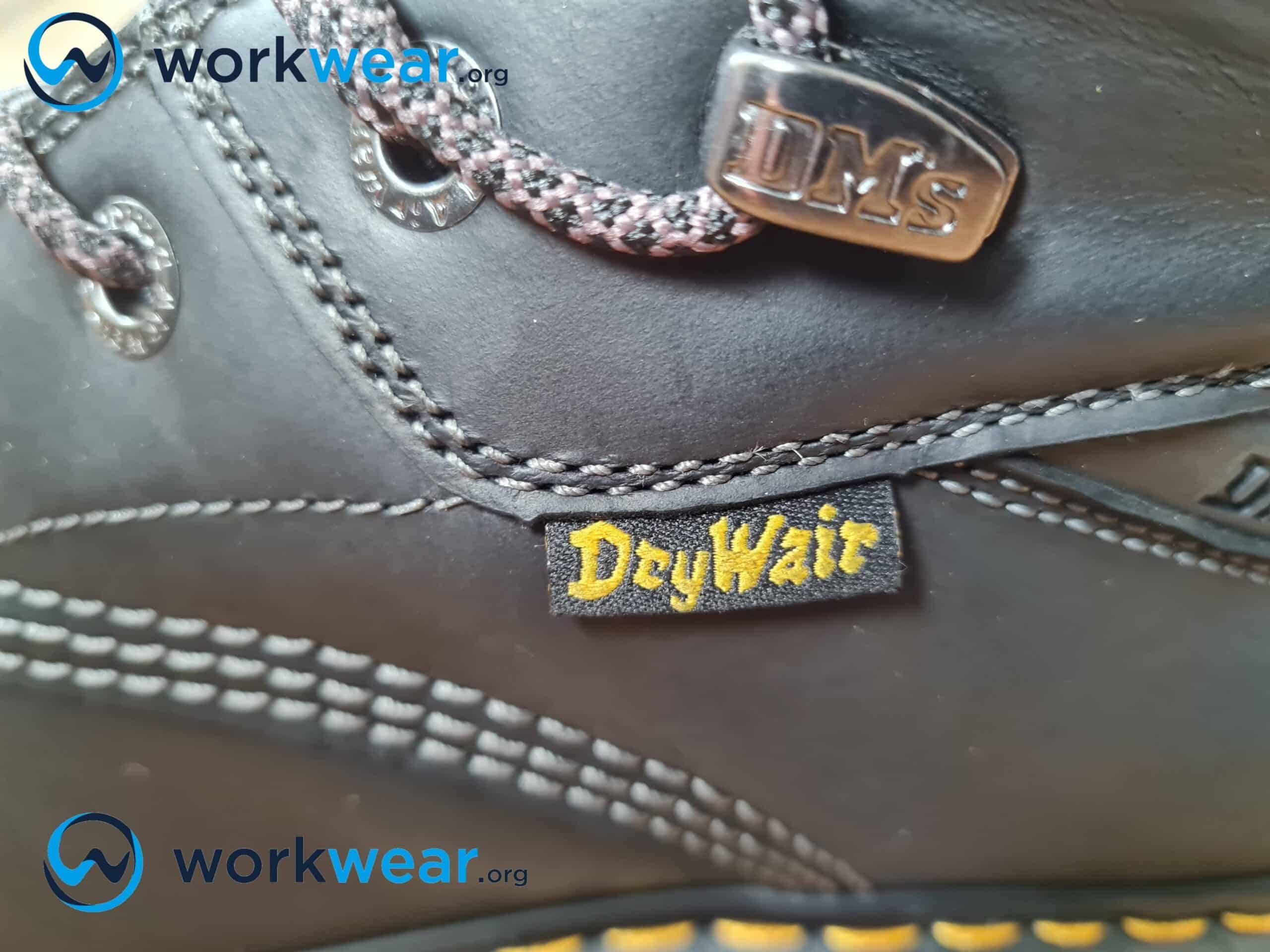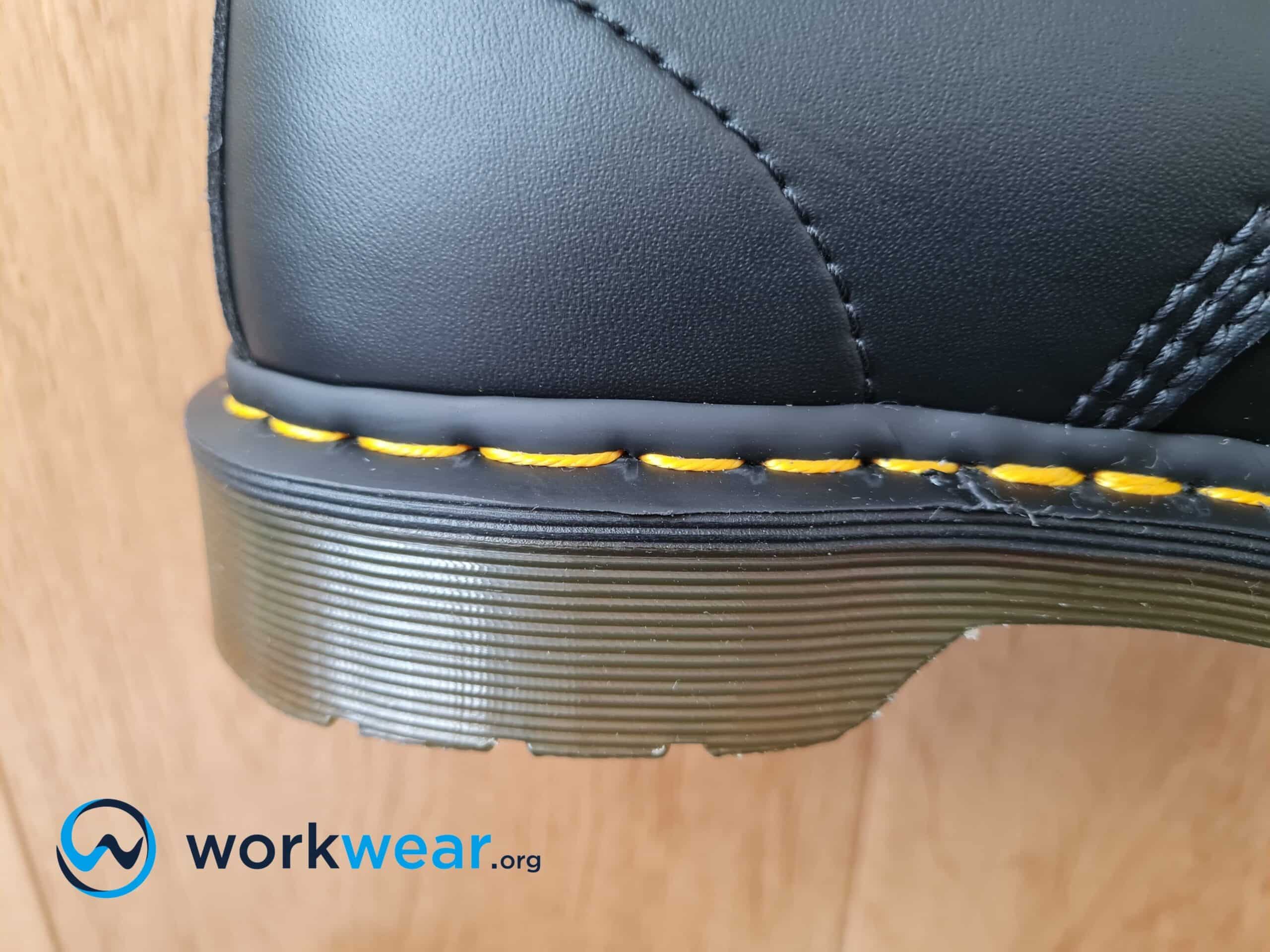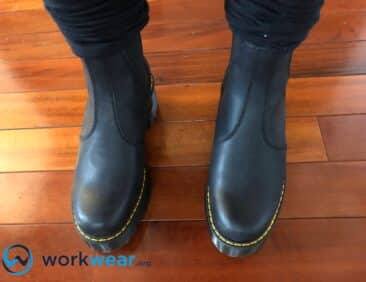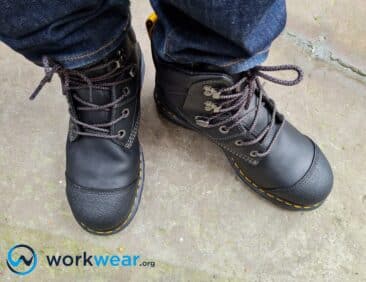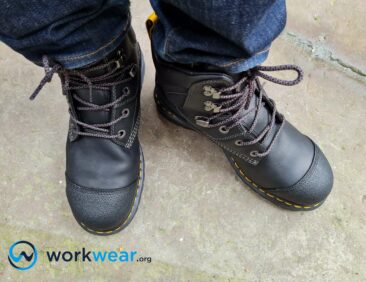Are Doc Martens Waterproof or Water-repellent?
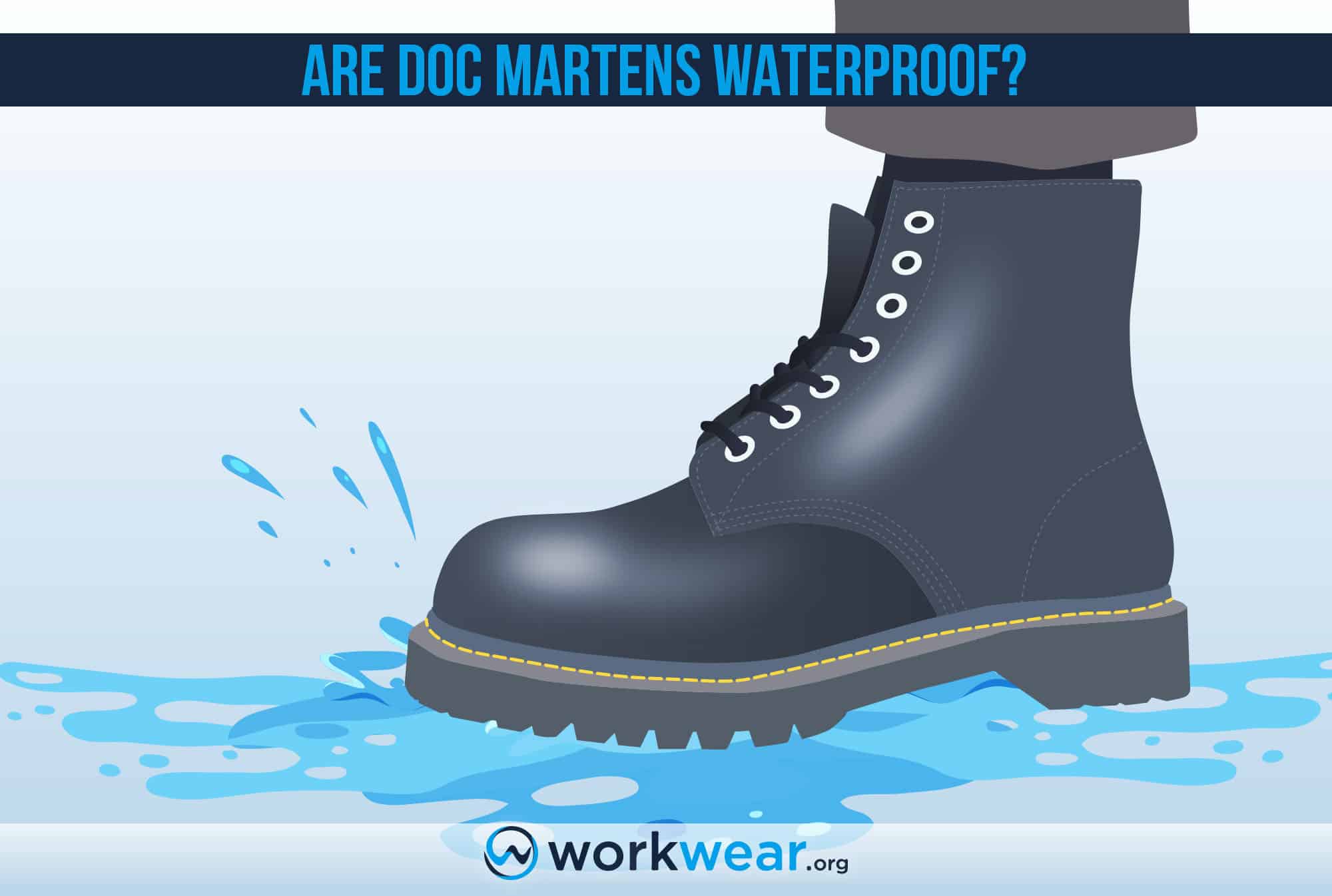
Work boots are built to protect the feet from the elements and safety hazards while maintaining a comfortable experience.
Dr. Martens is known for delivering the abovementioned benefits, providing superior performance and style that can be enjoyed on and off the worksite.
These boots use premium-quality leather that makes the uppers sturdy enough to maintain their outstanding appearance and function for a long time.
Many people assume that all Doc Martens boots are waterproof because of their thick leather uppers, but is this the case for every product?
Let’s go deeper into the construction of DMs to see if they are waterproof – and what makes them resistant to liquid penetration.
Are Doc Martens Waterproof?
The simple answer is yes – some (but not all) of their boots are waterproof.
Most Dr. Martens boots have naturally water-resistant leather uppers, meaning they can withstand minimal exposure to liquids without completely absorbing the moisture.
A pair of non-waterproof Doc Martens can be used in light rain for a few minutes without letting the water penetrate, so the feet can still feel dry and comfortable afterward.
Some users use waterproofing wax or sprays to increase their DMs’ resilience to liquids. These products need to be applied regularly to improve the boots’ protection against liquid absorption.
However, they don’t make the boots resilient enough to be submerged in water without causing damage.
On the other hand, Dr. Martens does have completely waterproof products.
The brand has a line of fully waterproof industrial boots featuring water-resistant leather and an exclusive waterproof membrane to block liquids, keeping the interior and the feet dry when working in wet conditions.
There are also classic Doc Martens boots that are offered in waterproof versions.
An example of this is the 1460 boot, whose original version is made with naturally water-resistant leather but comes in a waterproof version using waterproof leather.
It’s worth mentioning that Dr. Martens also has a rubber boot called Drench, which showcases the classic 8-eye profile that’s associated with the brand’s iconic leather boots. Drench boots are completely waterproof and have a fleece lining, making them suitable for extremely wet conditions such as outdoors in heavy rain, flooded areas, and deep mud.
What Makes Some Dr. Martens Boots Waterproof?
Republic WP Leather
Republic WP is a type of leather that’s used to build the uppers of some Dr. Martens work boots, especially those from the brand’s dedicated Industrial Line.
The material is an upgraded version of the timeless Crazy Horse leather, showcasing an oil-finished, waxy texture that’s enhanced further with a waterproof treatment.
Doc Martens boots with Republic WP leather uppers effectively stop liquid absorption and are suitable for wet work environments – including outdoor sites in the rain and ground conditions.
DryWair Lining
DryWair is Dr. Martens’ exclusive waterproof lining that fits into some boots’ interior.
It protects the feet against uncomfortable wetness by blocking liquid penetration.
What makes this membrane even more remarkable is its breathability, allowing sweat to evaporate quickly so that the feet won’t feel overheated and moist even with long hours of boot use.
The DryWair bootie is especially beneficial to boots with water-resistant leather uppers, significantly improving the footwear’s ability to stop water seepage in wet conditions.
Waterproof Welt
Dr. Martens uses a waterproof welt in some boot styles to guarantee that the sole offers superior waterproofing.
The manufacturers took the time-tested Goodyear welt and made it even better, with the welt being treated to twin heat-sealing and then stitching through the leather upper until the layer of high-density foam. The result is a fully waterproof sole that protects the foot against unwelcome moisture from the bottom.
Personal Testing Experience
We had the chance to test one of Dr. Martens’ waterproof boots on the job. The Duxford Steel Toe Boot is built with Republic WP leather to keep liquids out, maintaining comfortable dryness for much longer in wet surroundings. It uses waterproof welt construction to ensure that the sole seals out wetness. The steel toe caps defend the toes, keeping them safe against heavy objects that can roll or drop on the feet by accident when working in hazardous work areas. The puncture-resistant midsole protects the feet by stopping sharp items from piercing the sole. The slip-resistant sole grips most surfaces for improved stability, featuring a 3M reflective heel for better boot visibility in the dark. This boot feels a bit heavy, though, so it can start to drag on the foot after a while.
Conclusion
Doc Martens boots are made with high-quality leather uppers that naturally resist liquids, but not all DMs are waterproof. The classic leather styles may be enhanced with waterproofing products to increase their resistance to moisture absorption, allowing them to be used for longer in wet areas without the feet getting completely soaked. It’s worth noting that certain Dr. Martens boots come in waterproof and non-waterproof versions. For example – the iconic 1460 Boot is offered in the original thick, smooth leather with minimal liquid resistance and a completely waterproof version. Dr. Martens uses special components – such as waterproof leather, welt, and a waterproof bootie – to keep the wetness out, helping sustain the feet’s comfortable dryness in wet environments.
FAQs
- Can all Dr. Martens boots be used in the rain?
- Non-waterproof Dr. Martens boots can be used in light rain for a short while without allowing the liquids to penetrate. However, it’s best to use DMs with waterproof components for wetter conditions, such as heavy rain.
- Are Vegan Doc Martens waterproof?
- Vegan leather has a less porous structure than real leather but is still not waterproof. Like genuine leather Doc Martens, the vegan options offer minimal water resistance but are not waterproof.
- Do all Dr. Martens boots have waterproof soles?
- Not all. Most Doc Martens boots feature the Goodyear Welt construction that offers good liquid resistance but isn’t waterproof. Meanwhile, a signature waterproof welt method is used to make the soles of certain boots waterproof for superior wetness protection from the bottom.
- Can you improve the water resistance of Doc Martens?
- Yes, this can be done with the help of waterproofing creams or wax. These products are applied to the leather uppers, creating a barrier that increases the materials’ resistance to liquid penetration.
